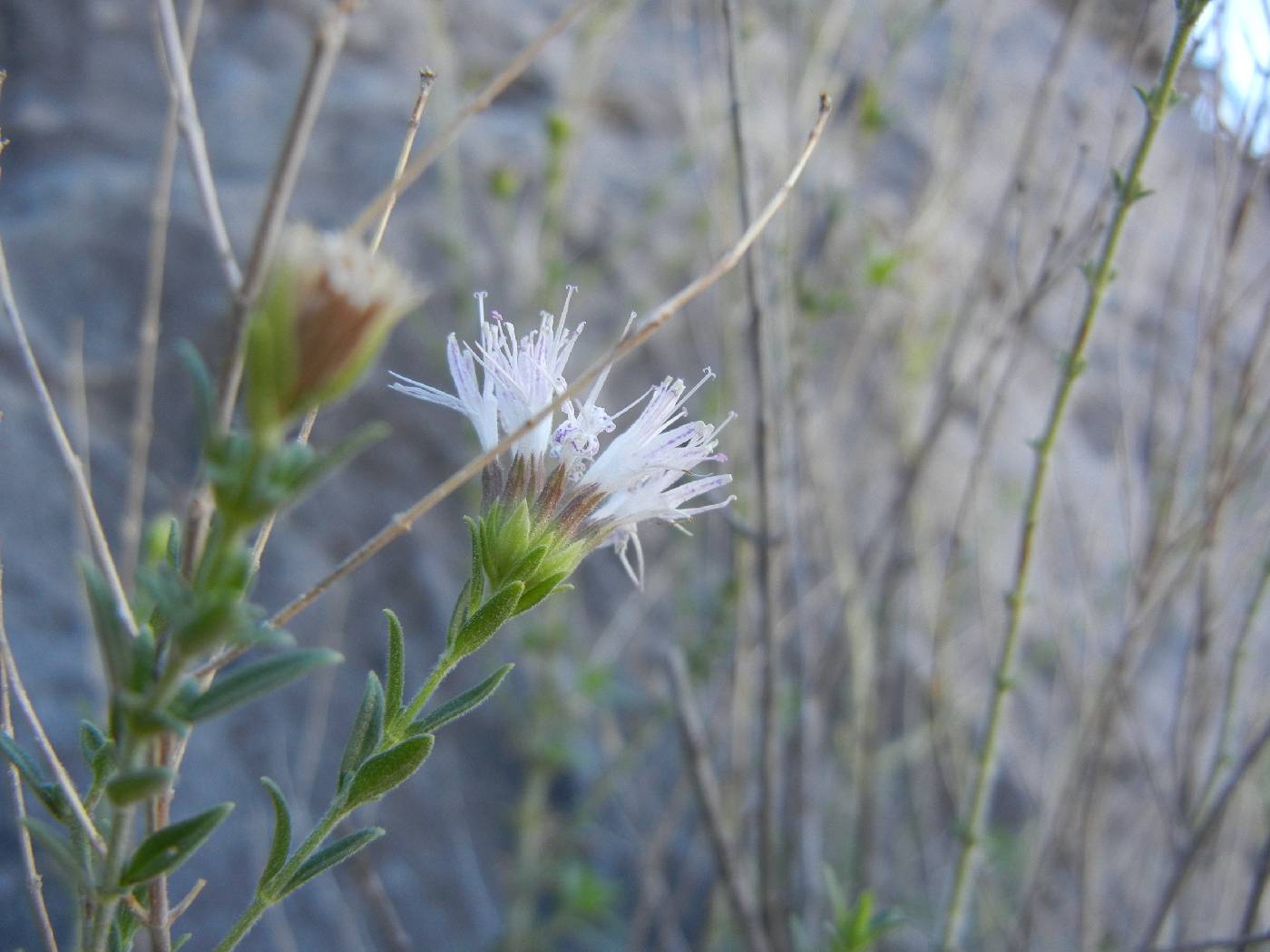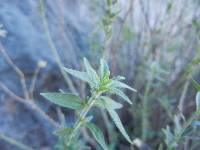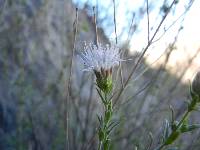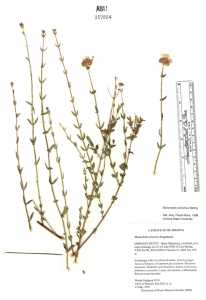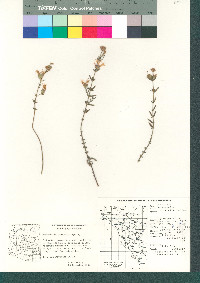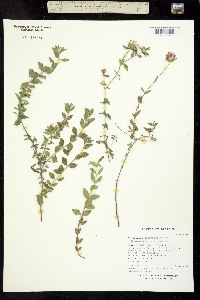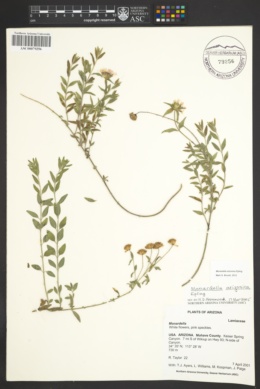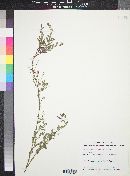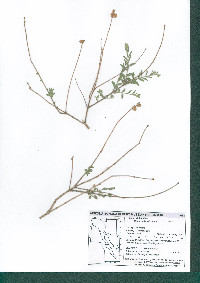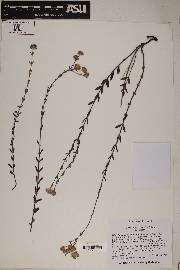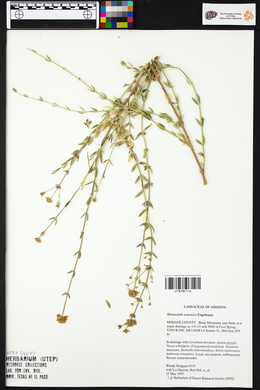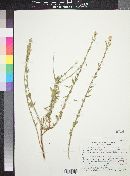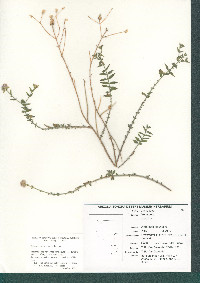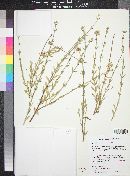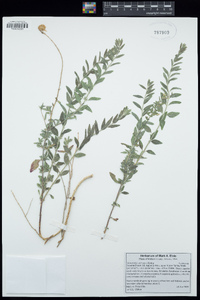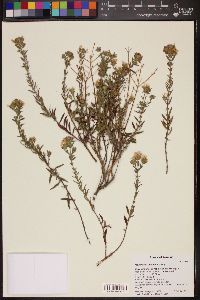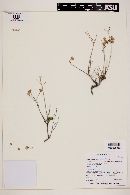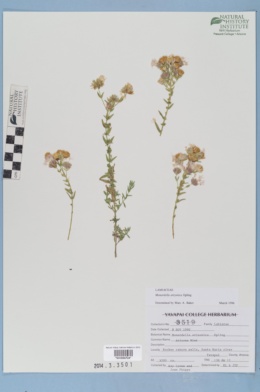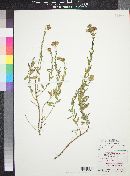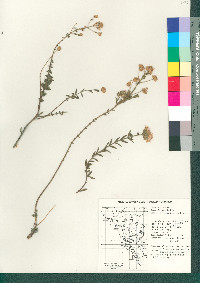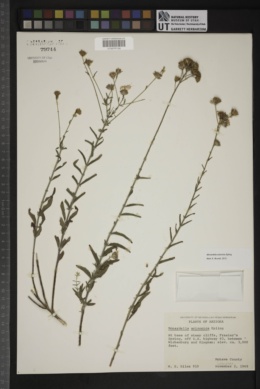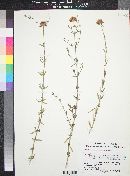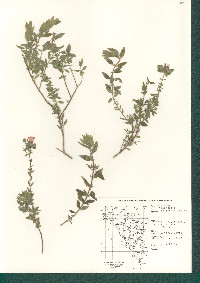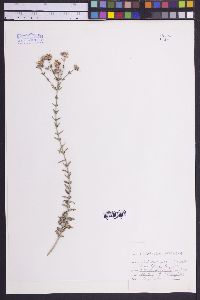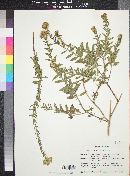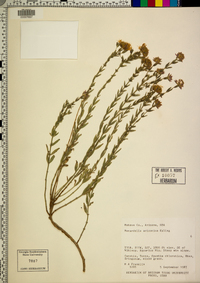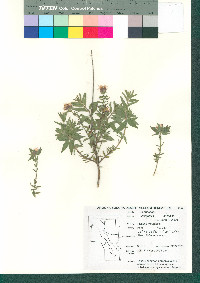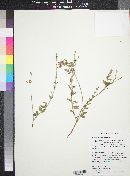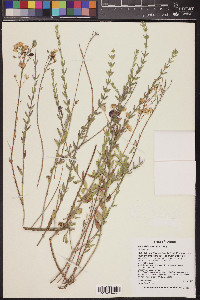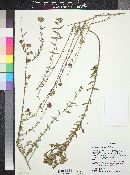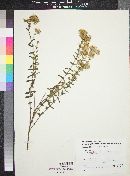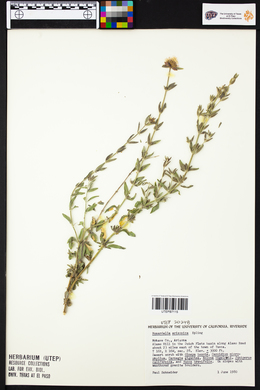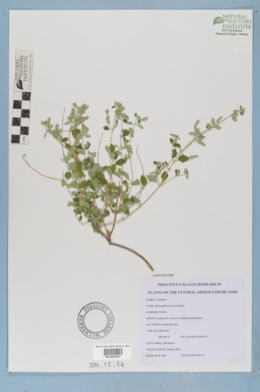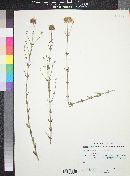Monardella arizonica
|
|
|
|
Family: Lamiaceae
Arizona monardella, more...Arizona Mountainbalm, bee balm, Arizona mint
|
Plant: perennial herb; Stems one to many, (15-)20-35(-50) cm long, terete to four-angled, moderately to densely pubescent, greenish-gray to tan, erect, the lateral branches fertile; rhizome stout, with peeling bark Leaves: sessile, linear, elliptic, or lanceolate, 0.5-2.5 cm long, 0.1-1.2 cm wide, moderately to densely pubescent, often with stalked glands; margins entire or deticulate; apex acute or obtuse INFLORESCENCE: terminal or axillary, one to several per stem; bracts 5 or more, sparsely ciliate, spreading, lanceolate, 0.3-1.5 cm long, 1-5 mm wide, at least half as long as calyx, green or tinged purplish Flowers: calyx tubular, 5-8 mm long, half the length of the corolla or less, sparsely to densely pubescent, the lobes acuminate, to 0.5 mm long; corolla tubular, 1.0-1.5 cm long, pale pink or white with purple spots, retrorsely puberulent; stamens equal, the anthers divergent and pale to purple; ovary 0.7-1.5 cm long; style 0.8-1.5 cm long Fruit: NUTLETS ovate to oblong, to 2 mm long, brown or tan with black spots Misc: Rocky ledges and canyon bottoms in Sonoran Desert scrub and chaparral; 600-2250 m (2000-7400 ft); Apr-Oct REFERENCES: Trauth Nare, Amy E. 2003. Lamiaceae. J. Ariz. - Nev. Acad. Sci. Volume 35(2). Christy et al. 2003, Kearney and Peebles 1969 Duration: Perennial Nativity: Native Lifeform: Subshrub General: Herbaceous perennials, to 50 cm tall, stems 1-many, erect, 4-angled, moderately to densely pubescent, greenish-gray to tan, the lateral branches fertile, rhizomes stout with peeling bark. Leaves: Opposite to whorled, sessile, linear, elliptic, or lanceolate, 0.5-2.5 cm long and 10-12 mm wide, margins entire or deticulate, apices acute or obtuse, surfaces moderately to densely pubescent and often with stalked glands, blades with conspicuous, light-green veination beneath, leaves tending to reduce in size from the mid-stems to the tips. Flowers: Pale pink or white with purple spots, bilabiate with tubular throats, each flower very small but occurring in clusters in rounded heads, corollas 10-15 mm long with retrorsely puberulent surfaces, calyx tubular, 5-8 mm long, half the length of the corolla or less, stamens equal, the anthers divergent and pale to purple, ovaries 7-15 mm long, styles 8-15 mm long, sparsely to densely pubescent, with acuminate lobes to 0.5 mm long, flowers with 5 or more green to purplish-tinged, sparsely ciliate, spreading, lanceolate, subtending bracts 3-15 mm long and 1-5 mm wide, flowers borne terminally or in stem axils in groups of 1-several per stem. Fruits: Ovate to oblong nutlets to 2 mm long, surfaces brown or tan with black spots. Seeds very small. Ecology: Found on rocky ledges and canyon bottoms in Sonoran Desert scrub and chaparral communities, from 2,000-7,500 ft (610-2286 m); flowering April-October. Distribution: Arizona only. Notes: Look to the small, rounded flowering heads and small, opposite, lanceolate leaves that are lightly appressed and form a v-shape on the whitish-green and herbaceous or woody, tan, square stems to help identify this species. This species is known to occur in Arizona only, look for it in Mohave, Yavapai, Maricopa, Yuma and Pima counties. Ethnobotany: Specific uses for this species are unknown, but other species in the genus have uses; plants used as medicine. Etymology: Monardella is a diminutive of Monarda, having the general appearance of dwarfs of that genus, and arizonica means of or from Arizona. Synonyms: None Editor: LCrumbacher2012 |

